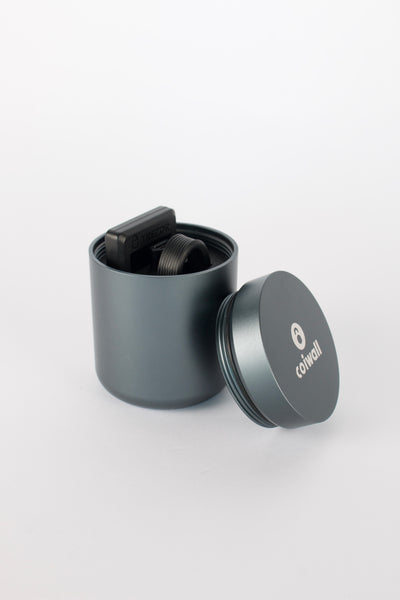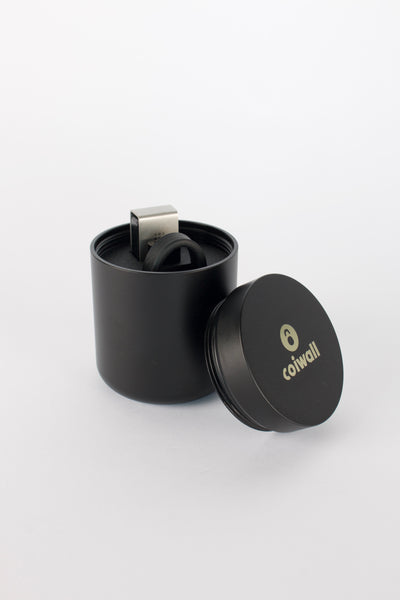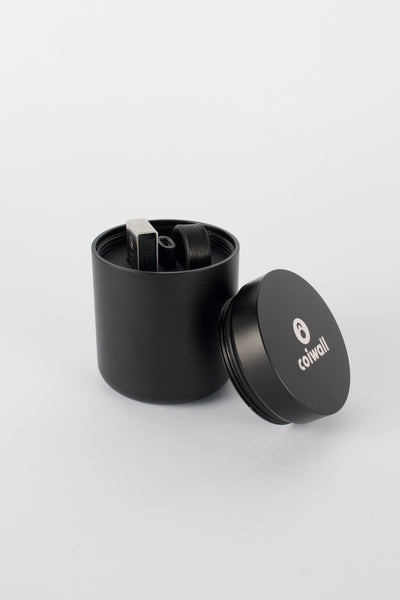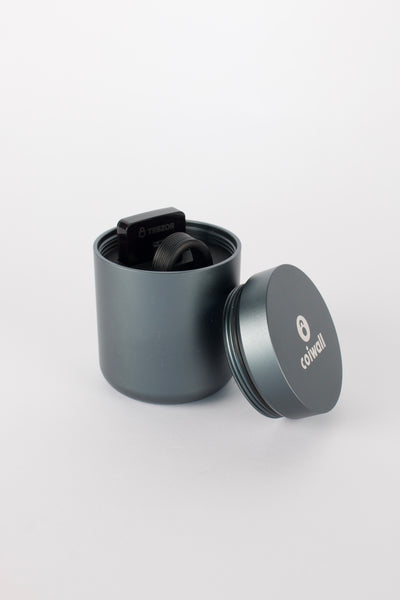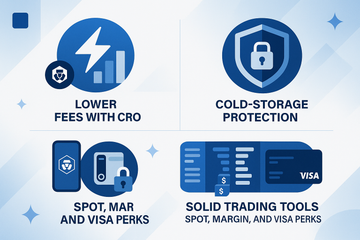If you have been around crypto for a minute, you have probably seen Crypto.com on an arena, in a commercial, or in your app store. The brand is big, sure, but the exchange itself is where traders get serious. Let me explain what it does well, where it draws lines by region, and how to use it without getting tripped up by fees or settings. You know what? We will even talk hardware wallets because long-term safety still matters when the market gets loud.
First things first, app versus exchange
Crypto.com runs two main experiences. The Crypto.com App is beginner friendly. You buy with a card or bank transfer, swap coins quickly, and earn yield on some assets. The Crypto.com Exchange is a separate login for deeper trading. Think order books, maker-taker fees, margin in some regions, and more control. The split is practical. If you want a clean interface and easy purchases, the app is simple. If you want limit orders, API keys, and fee tiers, the exchange is your lane.
Fees without the mystery
On the exchange, pricing follows a maker-taker model tied to 30-day volume. Maker orders add liquidity; taker orders remove it. Starting fees are competitive for spot trades, with discounts if your volume grows or if you stake CRO. The highest tiers can cut fees a lot, which is why active traders care about volume and CRO mechanics.
The app works differently. You see a simple buy or sell price, which includes a spread. Card purchases can carry added costs by region. Bank transfers are usually cheaper but settle slower. Crypto deposits are free, since the chain only charges you on withdrawals. Crypto withdrawals cost a network fee that depends on the asset. Fiat deposit and withdrawal fees depend on your payment rail and location. It pays to check the fee page for your country before you move size.
What you can actually trade
The exchange lists a wide set of pairs, from majors like BTC and ETH to active mid-caps. Spot is the base. Margin and derivatives are available in select regions, usually with compliance checks. If you are in a country with tighter rules for retail traders, you may see spot only. This split is normal across the industry and it changes over time as licenses roll out. The platform also supports common order types like limit, market, and stop orders, plus a decent API for bots and analytics.
Security, the boring part that saves you
Crypto.com pushes a layered security stack. Most customer assets are held in cold storage, and the company has partnered with Ledger Vault for institutional-grade custody. There is an insurance policy for certain cold wallet assets, and the operational hot wallet is managed with strict controls. The company highlights compliance certifications like SOC 2 Type II and ISO standards, which matter for process discipline even if they are not a magic shield.
They also publish a proof of reserves using Merkle-tree verification. Users can confirm their balances were included, which adds transparency. It is not a full audit of liabilities and risks, but it is a useful signal.
There was a security incident in early 2022 where a subset of accounts saw unauthorized withdrawals. Impacted users were reimbursed, and the platform tightened authentication, address whitelisting, and withdrawal cooldowns. Annoying at times, yes, but these controls reduce common attack paths.
Now a quick personal note on custody. Long-term holdings belong in a hardware wallet you control. Ledger and Trezor are the go-to names for a reason. Keep trading funds on an exchange if you need the speed. Move savings to cold storage and test a small withdrawal first. That habit pays for itself.
Where it is available, and what is restricted
Availability depends on where you live. The app is supported in many regions, with card or bank on-ramps depending on local rules. The exchange has wider restrictions, especially for derivatives. In the United States, access is more limited and has changed over time. Some services may be available to app users, while exchange features are restricted. In the European Economic Area and parts of Asia, you will usually see fuller coverage. You will need to complete KYC for either product, since compliance is baked into onboarding.
CRO and how it shapes perks
Crypto.com’s token, CRO, links perks across the app, exchange, and the Cronos ecosystem. Staking CRO on the exchange can cut trading fees and sometimes unlock other benefits. In the app, CRO ties into the Visa card program. Higher stake, higher rebate, subject to caps and local rules. Perks have changed before, so treat them as variable. If you value perks, check the latest table and ask yourself how much CRO exposure you want during a volatile market.
The card, Earn, and the extras
The Crypto.com Visa card lets you spend your balance in the real world. Some tiers give cash back in CRO, streaming rebates, and airport lounge access, all subject to region and stake. Limits apply, and terms can shift, so watch the fine print. If you travel a lot, the no foreign transaction angle is handy. Just remember that selling crypto to fund spending can be taxable where you live.
Earn allows you to get rewards on select coins and stablecoins, with flexible or fixed terms depending on the asset. Rates move with market conditions. Lockups can reduce liquidity, so keep a buffer for surprise dips or sudden chances.
About Cronos and on-chain activity
Cronos runs an EVM environment that plays well with Ethereum tools. Fees are low, and bridging is straightforward through supported channels. If you are exploring DeFi, an on-chain wallet is safer than keeping everything on an exchange. Crypto.com also offers a noncustodial DeFi wallet that you control with your seed phrase, which is a good bridge between app simplicity and on-chain freedom.
Who is Crypto.com exchange for
If you want polished mobile flow with quick buys, the app fits. If you are an active trader who cares about fee tiers, order books, and liquidity, the exchange fits. If you are a card-heavy spender who likes rewards, the Visa program can be useful, especially if you already plan a CRO stake.
Who might pass? If you only buy once a quarter and stash coins for years, a hardware wallet plus a low-fee on-ramp might be simpler. If you trade derivatives and live in a strict jurisdiction, check regional rules first to avoid a dead end.
Quick tips that save time and money
- Use maker orders when possible. Maker fees are usually lower than taker.
- Stake CRO only if the fee cuts or card perks outweigh token risk for you.
- Whitelist addresses and add a withdrawal cooldown. It prevents rushed mistakes.
- Test withdrawals with a tiny amount before you move size.
- Track taxes. Exports and API syncs with tools like Koinly or CoinTracker help.
Common questions, answered quickly
Is Proof of Reserves enough? It is helpful, but it is not a full view of risks. Use it with your own judgment and good custody habits.
Are deposits instant? Crypto deposits are fast once confirmed on-chain. Fiat speed depends on your bank and method. Cards are quick but can be costlier.
Does the card work everywhere? It works where Visa is accepted, subject to your region. Perks vary by tier and country.
A practical setup that just works
Here is a clean workflow many traders use. Keep a small trading stack on the exchange for speed. Use strong 2FA, not SMS. Turn on address whitelisting, and write down your anti-phishing code so phishing emails stand out. Park your savings on a hardware wallet such as Ledger or Trezor. When you need to top up the trading stack, move a small test first, then the rest. If you chase perks, revisit your CRO stake every few months, since markets and terms shift.
Honestly, Crypto.com has grown into a full stack, from quick buys to deeper trading and real-world spending. The brand is loud, but the mechanics are steady. Fees are fair if you play them right. Security is sensible if you use the tools. And if you want to keep things simple, the app side is easy to live with.
Final take. If you value a polished mobile app, a capable exchange, and a card that plugs your crypto life into everyday spending, Crypto.com is a strong contender. If you want pure self-custody and low friction on-chain, use it as a bridge, not a home. Markets move fast. Your setup should feel calm. Build it once, keep it tidy, and let the platform do the heavy lifting while you focus on decisions that matter.

